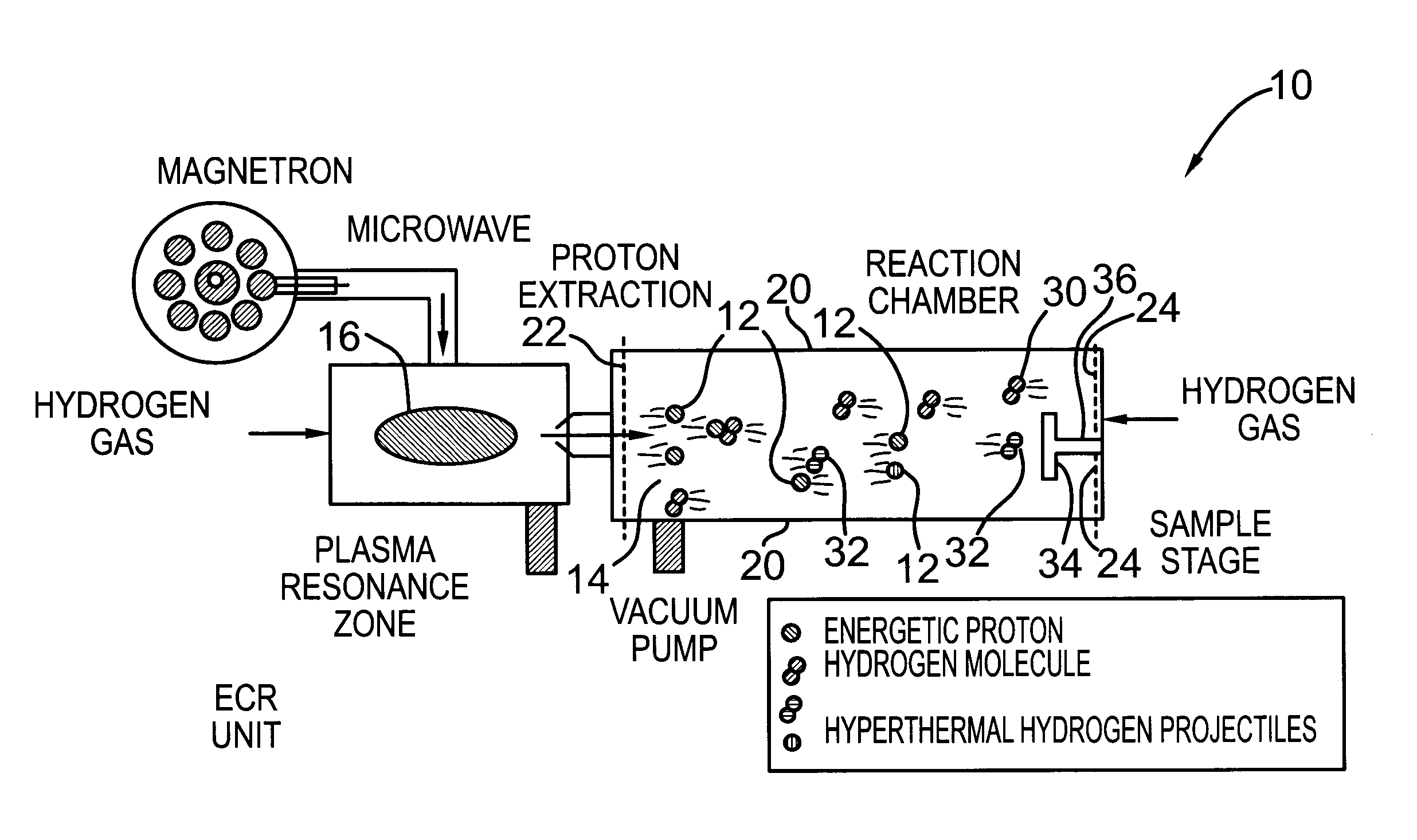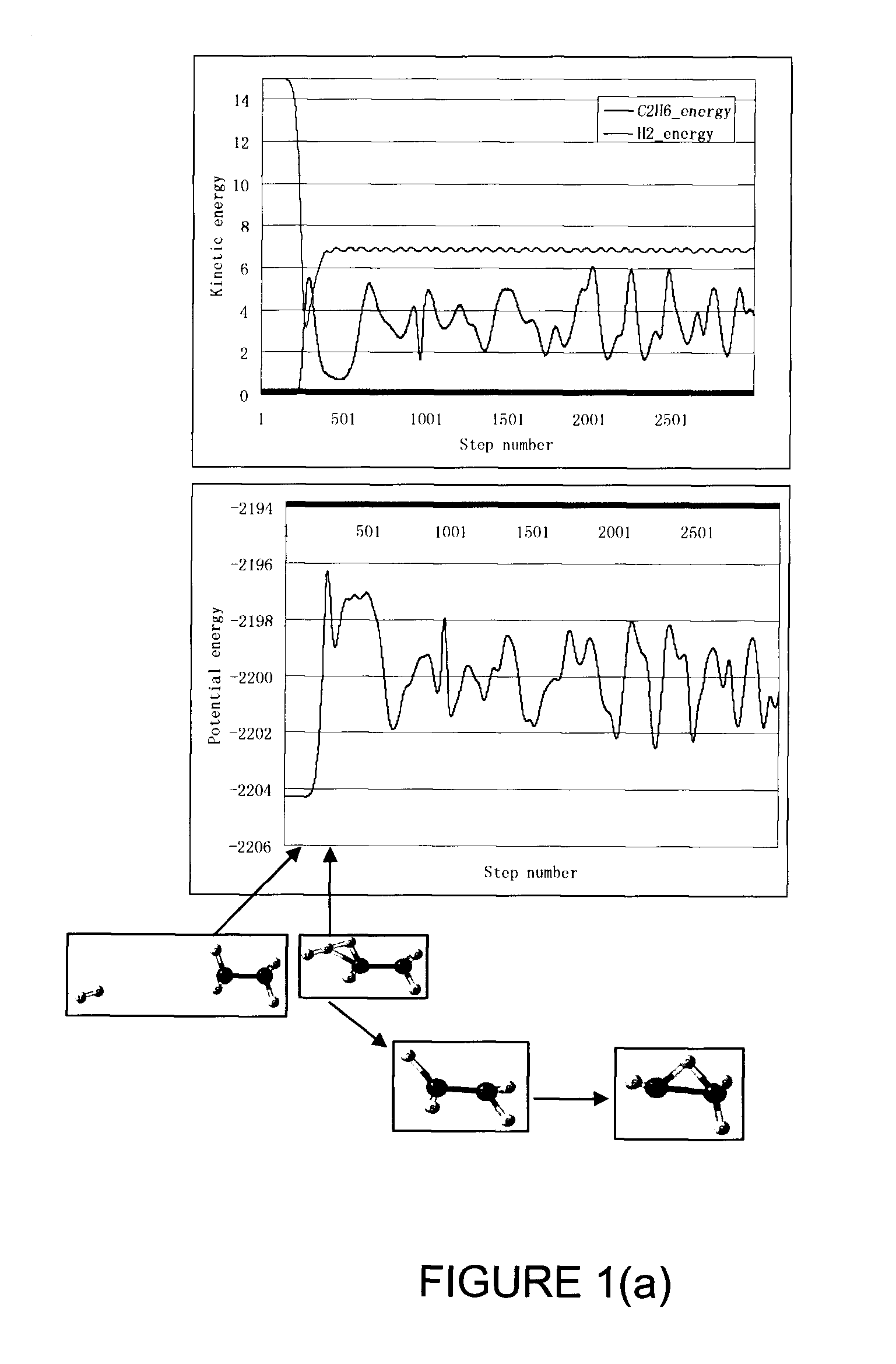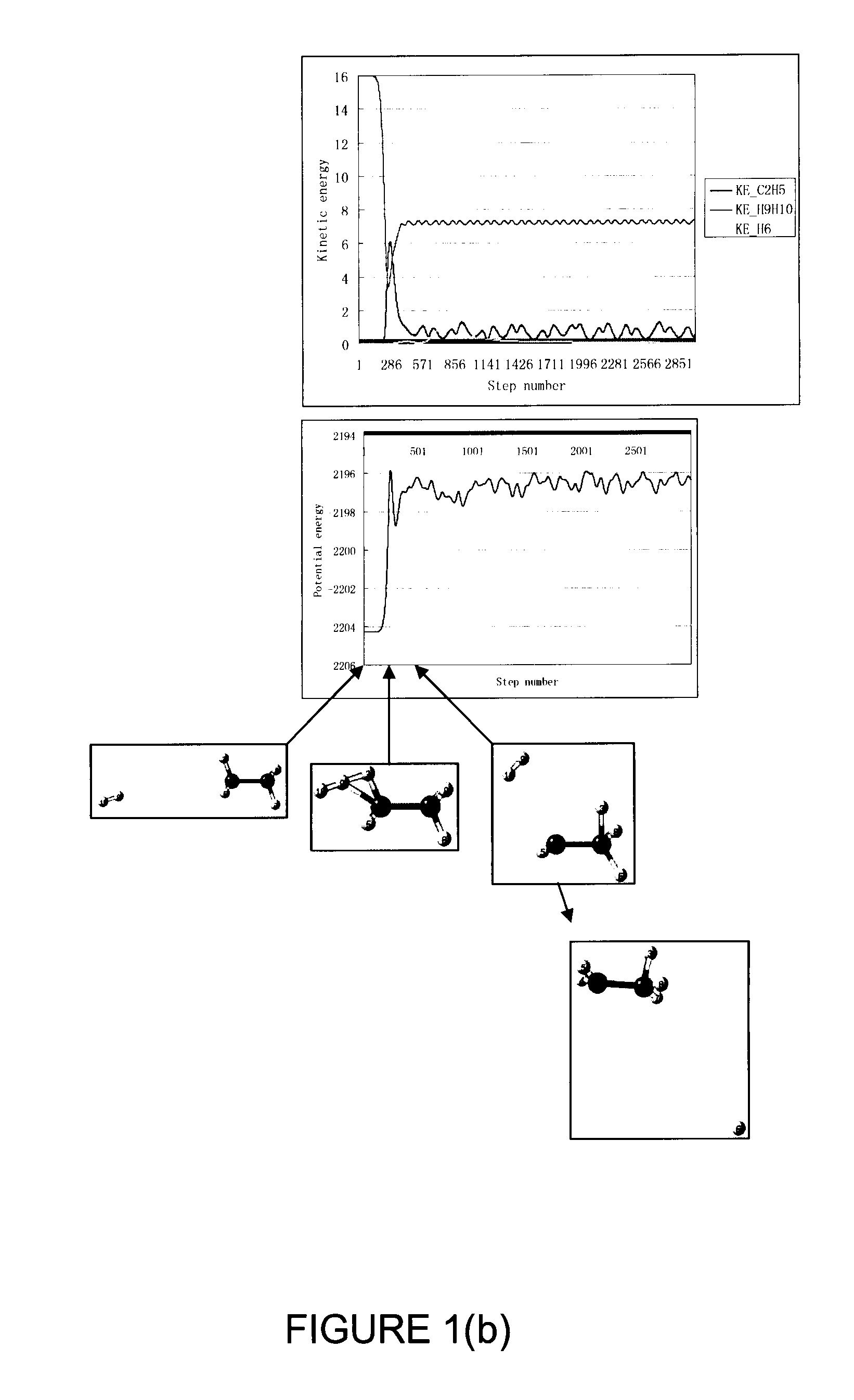METHOD FOR PRODUCING HYPERTHERMAL HYDROGEN MOLECULES AND USING SAME FOR SELECTIVELY BREAKING C-H AND/OR Si-H BONDS OF MOLECULES AT OR ON SUBSTRATE SURFACES
a hydrogen molecule and hyperthermal technology, applied in the field of materials synthesis, can solve the problems of undesirable deformation, inapplicability of heat-driven approach to those reaction systems, toxic and environmental harmful effects of reactive chemical reagents, etc., and achieve the effect of precise control of chemical and mechanical properties
- Summary
- Abstract
- Description
- Claims
- Application Information
AI Technical Summary
Benefits of technology
Problems solved by technology
Method used
Image
Examples
example 1
[0069]An ECR microwave hydrogen plasma was maintained with a low power input of 200 W and a proton flux of 3 mA over an extraction area of 200 cm2 was extracted with an extraction electrode to accelerate the protons to a kinetic energy of 96 eV into the drift zone 14 in FIG. 2. The drift zone was fed with molecular hydrogen at a pressure of 8×10−4 Torr. Substrates coated with 5 nm of dotriacontane were placed at 50 cm from the proton entrance to the drift zone. As such, the nominal flux ratio (hyperthermal neutral molecular hydrogen to proton) was estimated to be over 10 and the average energy of the hyperthermal neutral molecular hydrogen was estimated to be less than 10 eV. The substrates were bombarded by the hydrogen projectile particles comprising hyperthermal neutral molecular hydrogen with the bombardment duration controlled using a shutter. Cross-linking was completed in 40 seconds of bombardment under this set of conditions, which was confirmed with the dissolution test in ...
example 2
[0073]The experiments in EXAMPLE 1 were repeated with the same conditions except that the sample location was placed further away from the proton entrance to the drift zone. The flux factor was raised and the average energy of the hyperthermal neutral molecular hydrogen was reduced. There was no measurable cross-linking for the same bombardment time when the drift distance was changed to 75 cm. The ineffectiveness in cross-linking is attributed to the fact that the hyperthermal neutral molecular hydrogen projectiles do not have enough kinetic energy to break C—H bonds. The results from this set of experiments also indicate that atomic hydrogen drifted from the plasma to the sample is not an important reactant causing cross-linking in comparison to hyperthermal neutral molecular hydrogen properly generated in the drift zone because the flux of atomic hydrogen from the plasma should not change much when the sample location was moved from 50 cm to 75 cm. If atomic hydrogen can cause cr...
example 3
[0074]The same experiments in EXAMPLE 1 were repeated with the sample location at 50 cm and with polyacrylic acid as the precursor molecules. For a 10 nm polyacrylic layer, the cross-linking was completed in 80 seconds for hyperthermal molecular hydrogen at a nominal average energy of 6 eV. The retention of the —COOH functionality was found, with XPS, to be 90%. When this average bombardment energy was raised to 12 eV by increasing the extraction voltage, the —COOH retention factor dropped to 40%. This is consistent with the expectation that violent bombardment causes undesirable —COOH degradation. When the thickness of the polyacrylic acid layer was reduced to 5 nm, a bombardment of 10 seconds at this nominal average bombardment energy of 6 eV was enough to complete the cross-linking in reference to the dissolution test. The reduction of the bombardment time (i.e., fluence) requirement further increased the —COOH retention to >95%. As expected, a reduction of bombardment flux can r...
PUM
 Login to View More
Login to View More Abstract
Description
Claims
Application Information
 Login to View More
Login to View More - R&D
- Intellectual Property
- Life Sciences
- Materials
- Tech Scout
- Unparalleled Data Quality
- Higher Quality Content
- 60% Fewer Hallucinations
Browse by: Latest US Patents, China's latest patents, Technical Efficacy Thesaurus, Application Domain, Technology Topic, Popular Technical Reports.
© 2025 PatSnap. All rights reserved.Legal|Privacy policy|Modern Slavery Act Transparency Statement|Sitemap|About US| Contact US: help@patsnap.com



